How to stop slugs and snails from damaging cannabis plants
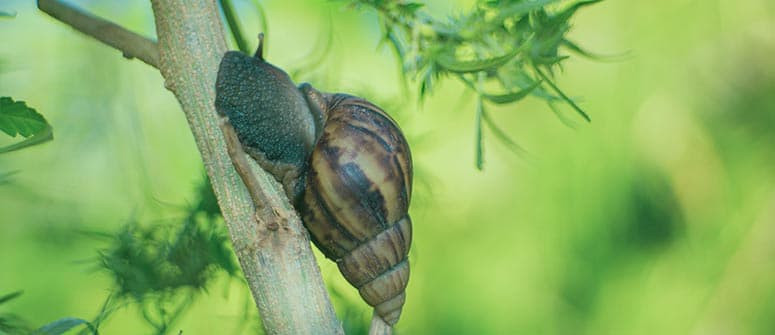
Slugs and snails can be a nuisance in a cannabis garden, as they like to consume the leafy green goodness of your cannabis plants. In this article, we look at ways to deter and remove slugs and snails from your cannabis garden, without turning to harmful pesticides. They may be slimy, but they play a role in the wider ecosystem.
Contents:
Many creatures will feast on your weed plants if given the chance, and slugs and snails are among the most common perpetrators. In this article, we look at how to stop them from ruining your cannabis crop, using organic means. In fact, many methods are non-lethal, and one includes inviting a range of predatory mammals, birds, and amphibians into your garden to clean up for you!
About slugs and snails
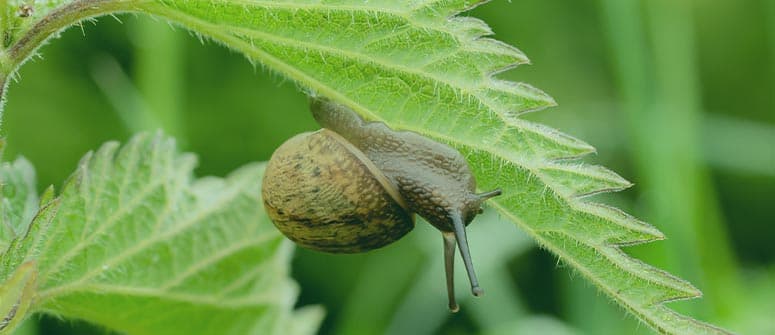
Slugs and snails may be the bane of the outdoor cannabis grower—but you should try not to view them as your nemeses. They are, after all, just trying to survive, whereas all we’re doing when growing cannabis is trying to get high. So from a dispassionate point of view, their desire to eat is probably more justifiable.
Slugs and snails are both species of molluscs. As you probably know, snails carry their homes around on their backs in the form of a shell, whereas slugs do not. There are many different species of slugs and snails, ranging from very common to less common. In relation to trying to keep them away from our weed crops, though, they can all be viewed in a similar way.
How can slugs and snails damage cannabis plants?
Most slugs and snails are omnivores, with a liking for green, leafy plants—such as cannabis. Given that, they will munch on cannabis leaves at the first opportunity. If they feast to their heart’s content, then they can easily damage a crop, thus reducing the overall yield.
Signs of slugs and snails on cannabis plants
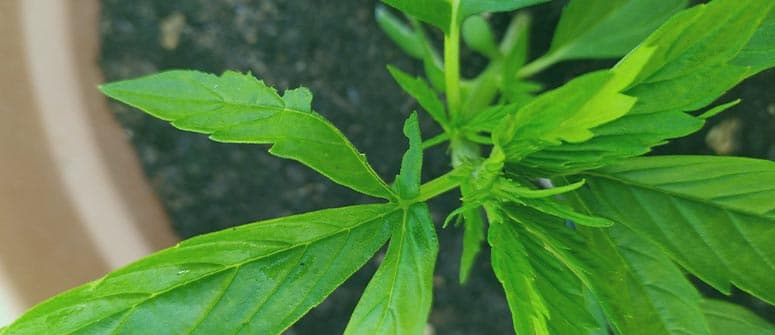
There are many different critters that can damage your marijuana plants. So in the absence of the creatures themselves, what are the telltale signs that snails and slugs are eating your crop?
- Large and ragged holes in tender leaves
- Damage in early spring, when many other insects are yet to appear
- Silver slime trails (snail trails) on chewed leaves and the ground
- Leaves on seedlings completely gone
- Scalloped (serrated) edges
How to stop snails and slugs from damaging cannabis plants
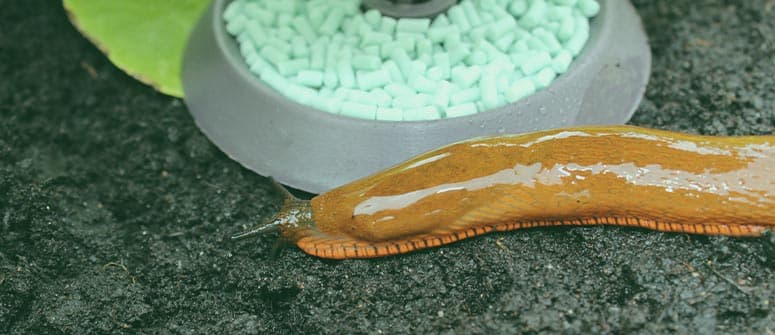
So, now we know how to spot them, but how do we stop them? Listed below are lethal and non-lethal methods of snail and slug damage prevention. If you can, we’d suggest opting for non-lethal methods.
Rehoming (for pacifists)
This is a more intensive method, but it’s effective and doesn’t require killing. In order to rehome slugs and snails, first you have to find them!
If you go out when it’s cool and damp, you shouldn’t have many issues finding slugs and snails if they’re about. Simply pick them up where you find them, collect them all, and move them to a new home. A park or piece of woodland should suffice, as there will be plenty of organic matter there for them to turn their attention toward.
Live traps
If you don’t fancy getting up early in the rain to go hunting for these slimy critters, you can create traps that will attract them, and then you can gather them all up at once.
You have two main options regarding traps.
The first is to leave out types of food that they are attracted to. Unsurprisingly, green leafy vegetables are a good option, as are oats. The key is to use weak attractants, mimicking natural food sources. Highly scented foods have two downsides: they will attract slugs and snails from far and wide, potentially increasing your problem, and they could also attract rats, introducing a whole new problem for your garden. Lightly scented foods will just target those already present.
A second option is to create an irresistible home for them. This needn’t be much by our standards. A rotting piece of wood in a dank corner of the garden, near the cannabis crop, will offer a cosy daytime hideaway for snails and slugs. Then, just head there in the heat of the day, collect everything that’s sleeping, and move them elsewhere! This is highly effective and requires minimal effort.
Beer trap
The yeast found in beer attracts slugs and snails, and the alcohol content kills many species (though not all).
However, this method is far from perfect. Yeast is a highly scented food source, and will attract critters from further afield. This means that you’ll actually be bringing in slugs and snails that would otherwise not come to your garden. As not all will actually consume the beer, it’s likely you won’t solve your problem, and may make things worse. In the process, you’ll be unnecessarily killing creatures too. So perhaps opt for a different course of action.
Attract predators
Attracting predators is probably the best option, as you get to turn your garden into a functioning ecosystem and protect some struggling species as well!
Birds, badgers, toads, hedgehogs, and so on all love to eat slugs and snails. They will also all appreciate a welcoming space.
Birds
Birds will find their own way to your garden if they feel like it’s somewhere they want to be. Factors outside of your control will likely determine whether they come or not. Although, you can always put up some bird boxes to attract certain species during the breeding season.
Badgers
Likewise, you may not want badgers setting up a home in your garden, but you can do things to make it easier for them to come across it during their midnight prowling. Even if you live in an urban environment, you’d be surprised how common badgers are. Consider leaving gaps in any fences, especially if they edge onto open, green spaces. Badgers may well find their way through during the night, and feast on any slugs and snails having a go at your weed plants.
Toads
If you want toads, you need to create a moisture-rich habitat. A little wetland environment, including ponds, may well attract them. Although, toads don’t actually live in water, so ensure there are dark, damp crevices nearby for them to shelter in.
Hedgehogs
Finally, hedgehog populations have shrunk significantly in recent years, and they can do with all the help they can get.
Alongside opening up garden fences a little to let them through on their wanderings, you can even build homes for them so they can take refuge permanently in your garden. A hedgehog can become a welcome addition to any garden, and will certainly make for a novel friend. Plus, they’ll even eat your slugs and snails for you!
Copper tape
The electroconductive nature of copper tape has a repellent effect on snails and slugs. The wider, the better (to a degree).
Using copper tape that is wider than the critters are long should, for the most part, keep them off your plants. If you’re growing in pots, you can just attach it in rings around the pots, and this should stop slugs and snails from climbing up.
If you’re growing in a bed, create a border of copper tape around it to stop the majority of these slimy intruders in their tracks.
What to avoid when dealing with slugs and snails
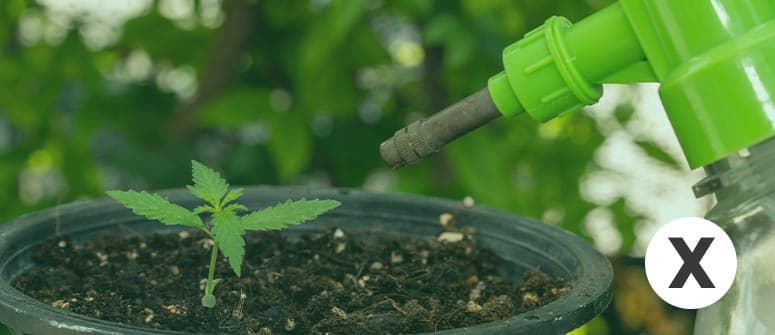
Many cannabis growers use pesticides and slug/snail pellets in their campaigns against so-called “pests”. We disagree with these methods. As well as being disproportionate in regard to the problem, they also have knock-on effects that damage the wider environment. Pesticides find their way into water and soil, poisoning the ground. And pellets can be passed up the food chain when predators eat animals that have consumed them. So stay away.
If you intend to fight snails and slugs, it needn’t be a war. There are many non-lethal methods you can try, or you can invite nature into your garden and let natural predators do your dirty work, while simultaneously enhancing the natural ecosystem. Opt for one of these methods, and you’ll have a healthy cannabis garden and a clean conscience.
.jpg)
.jpg)

.jpg)
